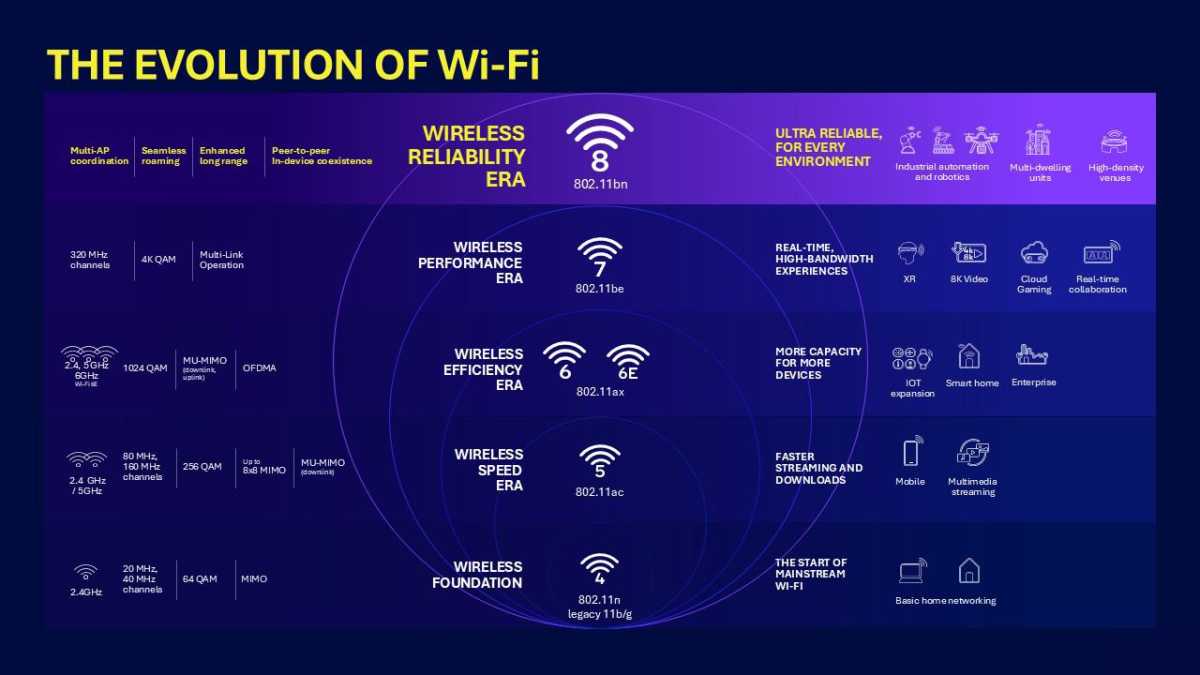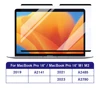Wi-Fi 7 is barely on the market and we’re already talking about the next version, Wi-Fi 8. To be more specific, the IEEE standards body has completed its first draft of the 802.11bn standard, which is what will be known as Wi-Fi 8 to consumers.
It’s actually a break from the last few 802.11 versions in that it doesn’t really try to improve maximum bandwidth. Instead, nearly all the new features are focused on reliability. The IEEE calls it “802.11bn Ultra High Reliability,” so you know what the priorities are.
Wi-Fi 7 already provides a maximum “in the lab” throughput of up to 46 gigabits per second, and while you’ll never get anywhere close to that in the real world, the best current Wi-Fi 7 routers are already achieving more then 2 Gbps in good conditions, and that will improve over the next few years.
Here’s how Wi-Fi 8 aims to provide a wireless experience more like using a wired connection.
A focus on reliability
Qualcomm never misses an opportunity to promote the next wireless standards, and is usually one of the first to support them (even in draft form) in its chips. The company has a page up about Wi-Fi 8, describing some of its benefits.
The new 802.11bn standard focuses on improving these areas:
Roaming between access points: If you’re in a big gym or office, or an airport or sporting venue, you move from one Wi-Fi access point to another as you walk around. Wi-Fi 8 will bring something called Single Mobility Domains which will keep you connected with continuous low latency as you jump between access points, without the hiccups and interruptions you get today.
Edge reliability: If you’re at the “edge” of your Wi-Fi range today, you know how it’s not just slower, it’s unreliable. There’s lag, dropped packets, disconnects and reconnects. Wi-Fi 8 has a set of enhancements that should make connections at the edge a lot more stable.
Cooperative behavior for dense environments: Wi-Fi in really crowded areas like sporting and music venues or conference centers struggle to deal with the large density of connected devices and multiple access points with overlapping areas. The 802.11bn spec introduces ways for multiple access points to work together cooperatively, dynamically adjusting channels, connections, and power to make sure they don’t get in each other’s way and everyone stays connected.
Getting along with other wireless: Modern devices have Wi-Fi, Bluetooth, and maybe other things like NFC and UWB. These can interfere with each other, especially if they share or have nearby antennas. Wi-Fi 8 is supposed to better handle the interruptions where resources (antennas, radio frequency spectrum, etc.) are used by another technology in the same device.
Power efficiency: Everyone wants their devices to be more power efficient. The 802.11bn standard incorporates new ways to know how much power is being used and is needed to maintain a good connection, so that home access points and portable devices can use less power without compromising the experience.

Qualcomm
When will Wi-Fi 8 come to Apple devices?
Wi-Fi 8 uses the same frequency bands (2.4GHz, 5GHz, and 6GHz) as Wi-Fi 7, and the same channel size, modulation, and more. That means a lot of the hardware will look very much like Wi-Fi 7. You’ll need new hardware, but it won’t be a dramatic departure from the Wi-Fi 7 hardware that will be common by 2028.
Apple doesn’t have a history of rushing to incorporate a new draft Wi-Fi standard, but also doesn’t wait very long after the standard is formally adopted. For example, Wi-Fi 7 was formally adopted in early 2024, even though devices supporting the “draft” standard were available the previous year. Apple’s first Wi-Fi 7 devices, the iPhone 16 line, were released in the fall of 2024, but the M4 Macs released in 2025 all support WiFi 6E.
By the time Wi-Fi 8 arrives (estimated to be 2028), Apple will have switched to using its own Wi-Fi and Bluetooth chips in nearly all its products, so there’s no telling if Apple will be among the first to support the new standard or how it will appear. For example, the iPhone 16 models with WiFi 7 are limited to 160MHz bandwidth rather than the maximum 320MHz that the Wi-Fi 7 standard allows, though they do support Wi-Fi 7 in all bands and Multi-Link Operation.





